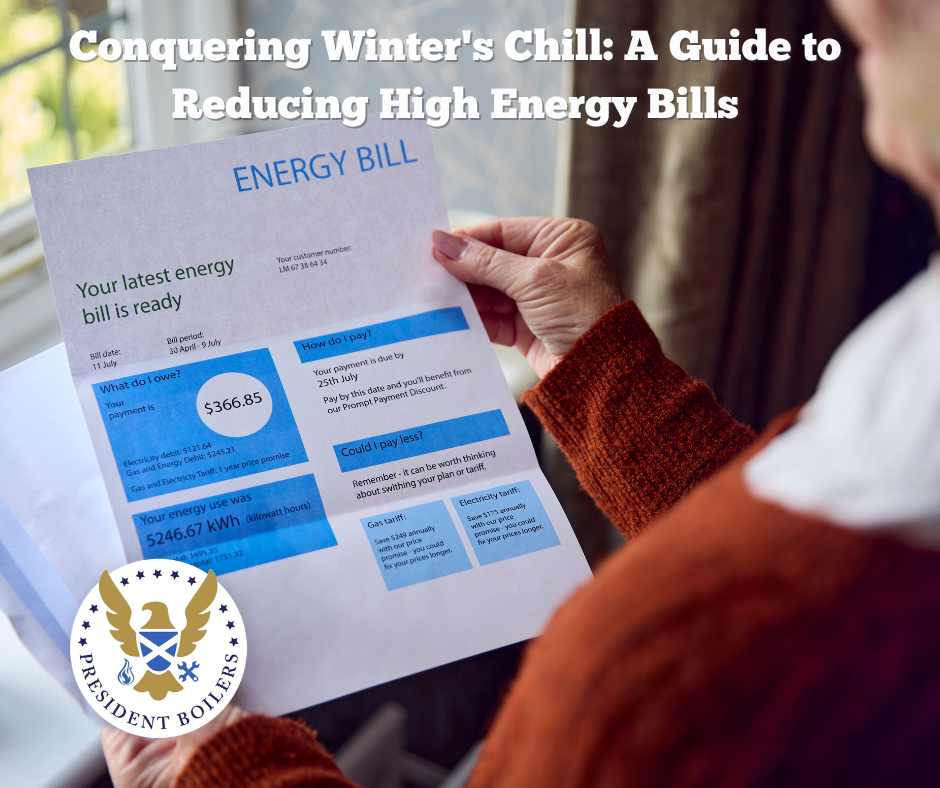Conquering Winter’s Chill: A Guide to Reducing High Energy Bills
Introduction
As winter blankets our surroundings in a frosty embrace, the warmth of our homes becomes a sanctuary against the biting cold. However, this season’s coziness often comes at a price – the daunting rise in energy bills. In this article, we will explore the challenges posed by high energy bills during the winter months, understand the factors that contribute to these costs, and uncover practical strategies for achieving a warm, cost-efficient home. So, let’s embark on a journey towards a winter season that keeps you snug without emptying your wallet.

Reasons for High Energy Bills
- Temperature Extremes: The harsh cold of winter forces heating systems to work overtime, consuming more energy to maintain comfortable indoor temperatures.
- Inefficient Heating Systems: Older, inefficient heating systems are notorious for guzzling energy. These systems struggle to generate warmth without consuming excess power.
- Inadequate Insulation: Homes lacking proper insulation allow warm air to escape, forcing heating systems to compensate by running longer and harder.
- Leaky Windows and Doors: Gaps around windows and doors let in cold drafts and allow heat to escape, forcing your heating system to work harder.
- Poor Thermostat Management: Inaccurate or outdated thermostats can lead to overheating or underheating, resulting in wasted energy.
Tips for Energy Efficiency
- Programmable Thermostats: Invest in programmable thermostats that allow you to set schedules for heating. Lower temperatures when you’re away or asleep to save energy.
- Seal Leaks: Inspect windows, doors, and other openings for leaks. Seal gaps and cracks to prevent heat loss and drafts.
- Regular Maintenance: Schedule annual maintenance for your heating system. Clean filters, lubricate components, and ensure everything is running efficiently.
- Upgrade Insulation: Improve insulation in attics, walls, and floors to retain heat. Consider adding weatherstripping to windows and doors.
- Use Space Heaters Wisely: Use energy-efficient space heaters in occupied rooms instead of heating the entire house.
Upgrading Heating Systems
- Energy-Efficient Options: Consider upgrading to energy-efficient heating systems like heat pumps, condensing furnaces, or boilers. These systems offer superior performance and cost savings.
- Zoning Systems: Install zoning systems that allow you to heat specific areas of your home. This prevents wasting energy on unused spaces.
- Regular Replacements: If your heating system is old and inefficient, it may be more cost-effective to replace it with a newer, energy-efficient model.
Cost-Effective Heating Solutions
- Layer Up: Instead of cranking up the heat, layer your clothing to stay warm indoors. Extra blankets and warm clothing can significantly reduce your reliance on heating.
- Let the Sun In: During daylight hours, open curtains and blinds to allow sunlight to naturally heat your home. Close them at night to retain warmth.
- Use Ceiling Fans: Ceiling fans set to run clockwise at low speed can help distribute warm air evenly throughout the room.
- Regular Servicing: Schedule regular servicing for your heating system to ensure it operates at peak efficiency, reducing energy wastage.
- Energy-Efficient Appliances: Consider upgrading to energy-efficient appliances. Modern appliances consume less power and generate less heat, reducing the strain on your heating system.
Conclusion
In the battle against skyrocketing energy bills during winter, knowledge and preparation are your strongest allies. By understanding the reasons behind high energy costs, implementing energy-efficient practices, and considering heating system upgrades, you can enjoy a warm and cozy home without feeling the financial chill. As winter’s cold embrace draws near, take these steps to ensure that your home remains a comforting refuge from the elements without the financial burden. Don’t let high energy bills steal the warmth and joy of the season.
